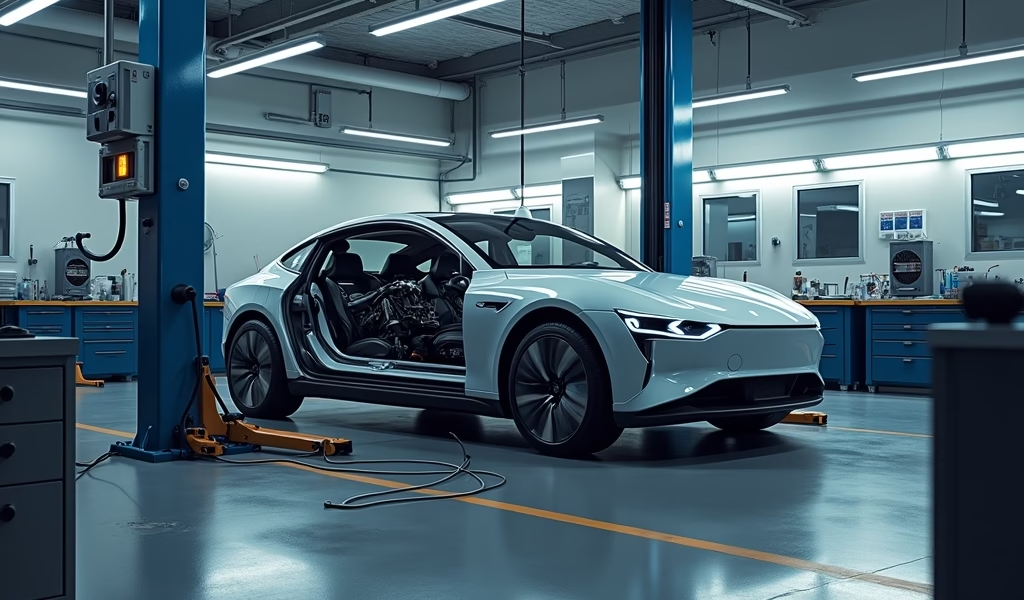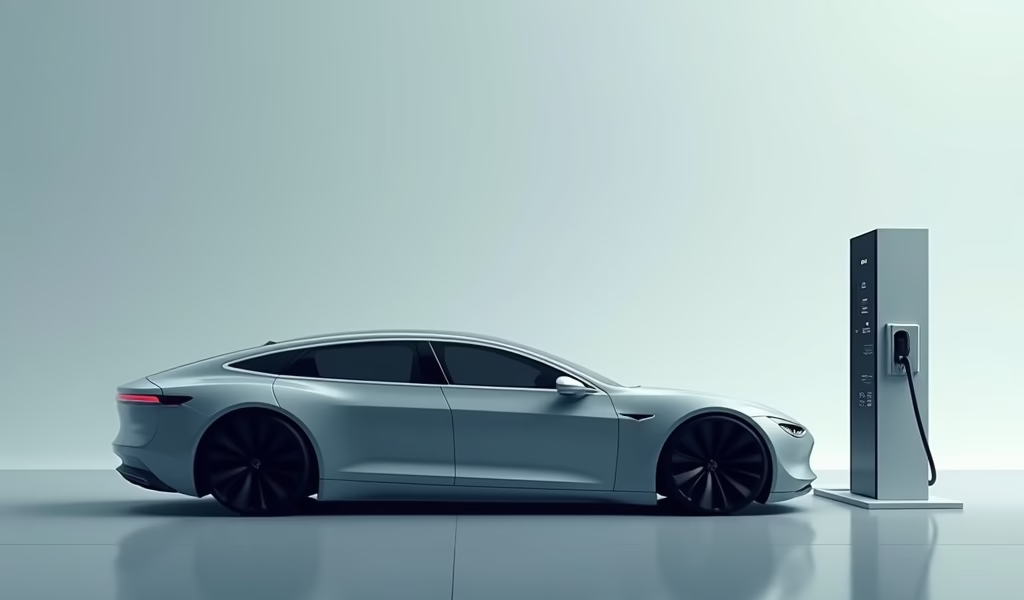Overview
The article examines seven key disadvantages of electric vehicles (EVs) – including limited range, charging infrastructure challenges, high upfront costs, battery degradation concerns, long charging times, electricity source considerations, and cold weather performance issues – while offering practical solutions for each problem. For most drivers, the advantages of lower operating costs, reduced maintenance, and environmental benefits outweigh the drawbacks, especially as technology continues to improve range, charging speed, and affordability each year.
Table of Contents
- Understanding the Disadvantages of Electric Cars
- Limited Range Anxiety and How to Overcome It
- Charging Infrastructure Challenges and Solutions
- High Upfront Cost and Long-Term Savings
- Battery Degradation and Replacement Concerns
- Long Charging Times and Quick-Charge Options
- Electricity Source Considerations
- Cold Weather Performance Issues
- Conclusion: Are Electric Cars Worth It?
- Frequently Asked Questions
Understanding the Disadvantages of Electric Cars
Electric vehicles (EVs) are undoubtedly reshaping our automotive future, but as a mechanic who’s worked on both traditional combustion engines and the latest EVs, I can tell you they’re not without their challenges. The disadvantages of electric cars range from range anxiety to charging infrastructure limitations, but here’s the good news – most of these issues have practical solutions.
In my 15+ years working with vehicles, I’ve watched EVs evolve from quirky novelties to mainstream options. While they offer impressive torque, lower maintenance costs, and environmental benefits, it’s important to understand their limitations before making the switch from your trusty gas-guzzler to a battery-powered ride.
Throughout this guide, I’ll walk you through the seven main disadvantages of electric cars and provide actionable fixes for each issue. Whether you’re considering purchasing a new EV or just curious about the technology, you’ll discover that most EV challenges have practical workarounds.
Limited Range Anxiety and How to Overcome It
Range anxiety – that nagging fear of running out of juice before reaching your destination – tops the list of disadvantages of electric cars. While today’s EVs typically offer between 150-300 miles on a single charge, this still falls short of the 400+ miles many gas vehicles can achieve.
The reality is that for daily commuting, most EVs provide more than enough range. The average American drives about 40 miles per day, well within even the most modest EV’s capabilities. It’s the occasional road trip that might cause concern.

Practical Fixes for Range Anxiety:
- Plan your routes: Apps like PlugShare, ChargePoint, and Electrify America map charging stations along your journey. Modern EV navigation systems also incorporate charging stops into route planning.
- Adjust your driving style: Hard acceleration drains batteries quickly. Gentle acceleration and maintaining steady speeds can increase range by 10-15%.
- Use eco modes: Most EVs include driving modes that optimize for efficiency rather than performance.
- Consider a PHEV: If range anxiety is your primary concern, plug-in hybrid electric vehicles (PHEVs) offer electric driving for daily use with gas backup for longer trips.
According to Department of Energy research, most EV owners quickly adapt to their vehicle’s range and find it sufficient for their needs after the initial adjustment period.
Charging Infrastructure Challenges and Solutions
Another significant disadvantage of electric cars is the still-developing charging infrastructure. While gas stations seem to be on every corner, finding a compatible, available charging station can require more planning – especially in rural areas or during road trips.
Charging infrastructure is expanding rapidly, with over 50,000 public charging stations now available across the US. However, station compatibility, reliability, and availability remain inconsistent compared to traditional fueling options.
Smart Solutions for Charging Challenges:
- Install home charging: About 80% of charging happens at home. A Level 2 charger installation costs $500-2,000 but dramatically improves your daily experience.
- Utilize workplace charging: Many employers now offer free or subsidized charging as a benefit.
- Research charging networks: Some networks offer more reliable service than others. Research which networks have strong coverage in your area.
- Consider charging subscriptions: Many providers offer membership plans that reduce per-session costs and provide additional benefits.
The good news is that federal initiatives are investing billions to expand charging infrastructure nationwide, with a goal of 500,000 public chargers by 2030.
High Upfront Cost and Long-Term Savings
Let’s talk money – one of the most obvious disadvantages of electric cars is their higher sticker price. EVs typically cost $5,000-15,000 more than comparable gas models, primarily due to battery costs, though this gap is narrowing yearly.
While contemplating whether to lease or finance your next vehicle, it’s important to consider the total cost of ownership rather than just the upfront price. EVs offer significant savings on fuel and maintenance that often offset the higher initial investment.
How to Make EVs More Affordable:
- Take advantage of incentives: Federal tax credits of up to $7,500 are available for many EVs, with additional state and local incentives often available.
- Consider leasing: EV leases can be attractive because the tax credit is factored into lease pricing, lowering your monthly payments.
- Look at used EVs: The used EV market offers significant discounts, though battery health becomes an important consideration.
- Calculate total ownership costs: Lower fuel costs (electricity vs. gas), reduced maintenance (no oil changes, fewer brake jobs), and potential insurance discounts can save $5,000-10,000 over five years.
Many manufacturers are working to produce more affordable EVs, with several models now starting under $30,000 after incentives. The cost disparity is expected to vanish entirely by 2025-2027 as battery prices continue to drop.
Battery Degradation and Replacement Concerns
Battery health is a legitimate concern when considering the disadvantages of electric cars. Just like your smartphone battery loses capacity over time, EV batteries gradually degrade, reducing range and potentially requiring expensive replacement.
The good news is that modern EV batteries are proving more durable than initially expected. Most manufacturers warranty their batteries for 8-10 years or 100,000+ miles, and real-world data shows many packs maintaining 80-90% capacity well beyond those milestones.
Strategies to Maximize Battery Life:
- Avoid frequent DC fast charging: While convenient for road trips, frequent fast charging generates more heat and can accelerate degradation.
- Don’t regularly charge to 100%: Many manufacturers recommend staying between 20-80% for daily use, saving full charges for long trips.
- Park in moderate temperatures when possible: Extreme heat is particularly hard on batteries. Garage parking helps regulate temperature extremes.
- Consider battery-friendly EVs: Some models (particularly those with liquid-cooled battery systems) show better long-term battery health.
When replacement does become necessary, costs are dropping. What was once a $20,000+ expense is becoming more affordable, with some replacement packs now available for under $10,000. Many companies are also developing partial replacement options for specific modules rather than entire packs.

Long Charging Times and Quick-Charge Options
Perhaps the most significant practical disadvantage of electric cars compared to gas vehicles is charging time. While refueling a gas tank takes about five minutes, fully charging an EV can take anywhere from 30 minutes to overnight, depending on the charging method.
This reality requires a different mindset around “refueling” – thinking of it as something that happens while you’re doing other things rather than a dedicated activity. For most owners, this means plugging in at home overnight or at work during the day.
Charging Speed Solutions:
- Invest in Level 2 home charging: Upgrading from a standard outlet (Level 1, ~4-5 miles of range per hour) to a Level 2 charger (25-30 miles per hour) dramatically improves the experience.
- Use DC fast charging strategically: These stations can add 150-200 miles of range in 30-45 minutes, making them perfect for road trip pit stops.
- Choose an EV with faster charging capabilities: Models vary significantly in how quickly they can accept charge. Some can charge from 10-80% in under 20 minutes.
- Plan charging around activities: Charge while shopping, eating, or during other planned stops to minimize perceived waiting time.
Charging technology continues to advance rapidly, with new ultra-fast charging standards promising to cut charging times to under 15 minutes in the coming years.
Electricity Source Considerations
A commonly overlooked disadvantage of electric cars relates to electricity generation. While EVs produce zero tailpipe emissions, the environmental benefits depend on how the electricity charging them is produced. If your region relies heavily on coal power plants, your EV’s overall carbon footprint may be higher than in areas with cleaner energy sources.
That said, even in coal-heavy regions, EVs typically produce fewer lifetime emissions than gas vehicles due to their superior efficiency. As grids nationwide transition to renewable energy, this advantage will only increase.
Maximizing Environmental Benefits:
- Research your local grid: Understanding your region’s energy mix helps you assess your EV’s true environmental impact.
- Consider home solar: Pairing an EV with solar panels creates a truly low-emission transportation solution and can offer significant long-term savings.
- Use time-of-use plans: Many utilities offer lower rates during off-peak hours when demand is lower and renewable generation may be higher.
- Support clean energy programs: Many utilities offer renewable energy purchase options that allow you to offset your electricity use.
The grid is becoming cleaner each year, with renewable energy expanding nationwide. As this trend continues, EVs will offer increasingly significant environmental advantages over fossil-fuel vehicles.
Cold Weather Performance Issues
As a mechanic working in a region with cold winters, I’ve seen firsthand how temperature affects EVs. Cold weather can reduce range by 20-40%, posing another significant disadvantage of electric cars for those in northern climates.
This range reduction occurs because batteries are less efficient in cold temperatures, and energy must be diverted to heat the cabin and battery. Unlike gas cars that use waste engine heat, EVs must generate heat electrically, consuming precious battery power.
Winter Driving Strategies:
- Precondition while plugged in: Warming the cabin and battery while still connected to power preserves range.
- Use seat and steering wheel heaters: These targeted heating elements use less energy than heating the entire cabin.
- Garage parking when possible: Keeping your EV sheltered from extreme cold helps maintain battery temperature.
- Plan for reduced range: In very cold conditions, expect 20-30% less range and charge accordingly.
- Consider models with heat pumps: Some newer EVs include heat pump systems that can significantly reduce the winter range penalty.
Manufacturers continue to improve cold-weather performance with each generation. Many new models for sale now include sophisticated thermal management systems specifically designed to minimize cold-weather range loss.
Conclusion: Are Electric Cars Worth It?
Despite the disadvantages of electric cars we’ve explored, the EV revolution shows no signs of slowing. Each year brings improvements in range, charging speed, and affordability that address these challenges. For most drivers, the advantages of lower operating costs, reduced maintenance, and environmental benefits already outweigh the drawbacks.
The key to a successful EV experience is understanding these limitations and implementing the practical solutions we’ve discussed. Range anxiety typically fades after a few weeks of ownership as drivers adapt to new refueling patterns. Charging infrastructure continues to expand rapidly, and battery technology improves with each model year.
Your specific situation – where you live, your driving patterns, and access to home charging – will determine whether an EV makes sense for you today. If you’re still uncertain, consider a plug-in hybrid as a transitional option that offers electric driving for daily use with the security of gas backup.
As a mechanic who’s witnessed the evolution of automotive technology for decades, I can say with confidence that electric vehicles represent the future of transportation. The disadvantages of electric cars are real but increasingly manageable, and the benefits become more compelling each year.
Have you made the switch to an electric vehicle or are you considering it? We’d love to hear about your experiences and concerns in the comments below. If you found this guide helpful, please share it with friends who might be weighing the pros and cons of EVs. And don’t forget to sign up for our newsletter for more practical automotive advice and the latest on EV developments.
Frequently Asked Questions
Are electric cars really better for the environment?
Yes, even accounting for battery production and electricity generation, EVs typically produce fewer lifetime emissions than gas vehicles. This advantage increases as electrical grids incorporate more renewable energy sources.
How much does it cost to replace an EV battery?
Replacement costs range from $4,000 to $20,000 depending on the model and capacity. However, most batteries are warranted for 8-10 years, and prices continue to decrease as technology improves.
Can I take road trips in an electric car?
Yes, with planning using apps like PlugShare to map charging stations along your route. Fast-charging networks now connect most major highways, making interstate travel increasingly viable.
Do electric cars lose value faster than gas cars?
Historically, EVs depreciated faster due to technology improvements and battery concerns. Recent data shows this gap narrowing as the market matures and battery longevity proves better than expected.
How much can I save on maintenance with an EV?
EV owners typically save 30-50% on maintenance costs compared to gas vehicles. With no oil changes, fewer brake replacements (due to regenerative braking), and simpler drivetrains, annual maintenance averages $300-400 versus $600-1,000 for gas vehicles.


Pingback: Should I Buy an Electric Car? 5 Pro Tips - knowsyourcar.com